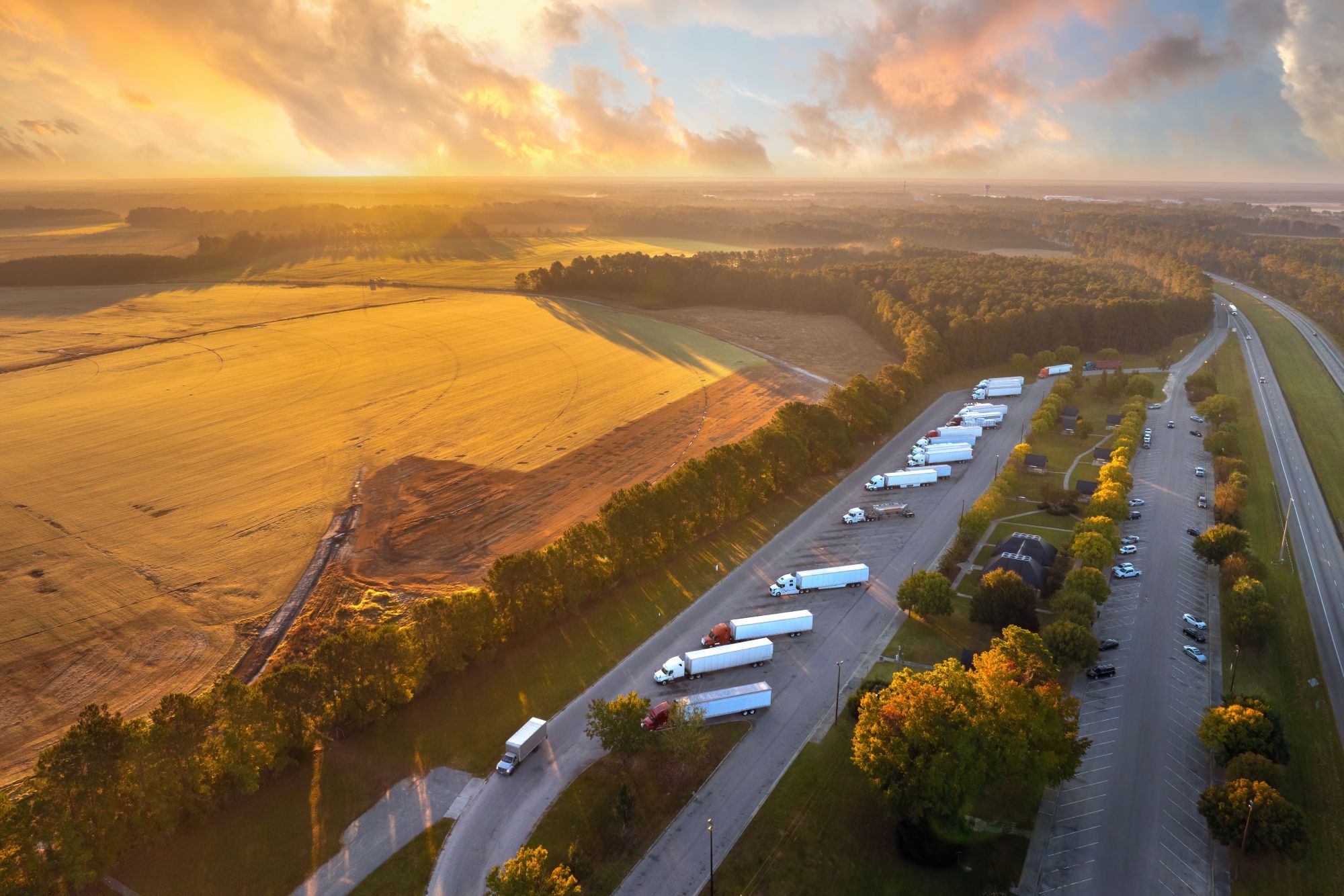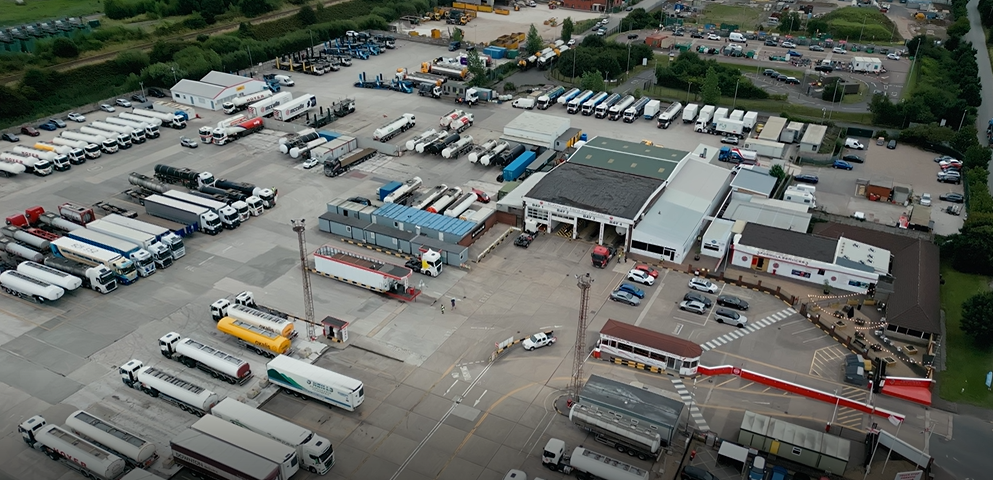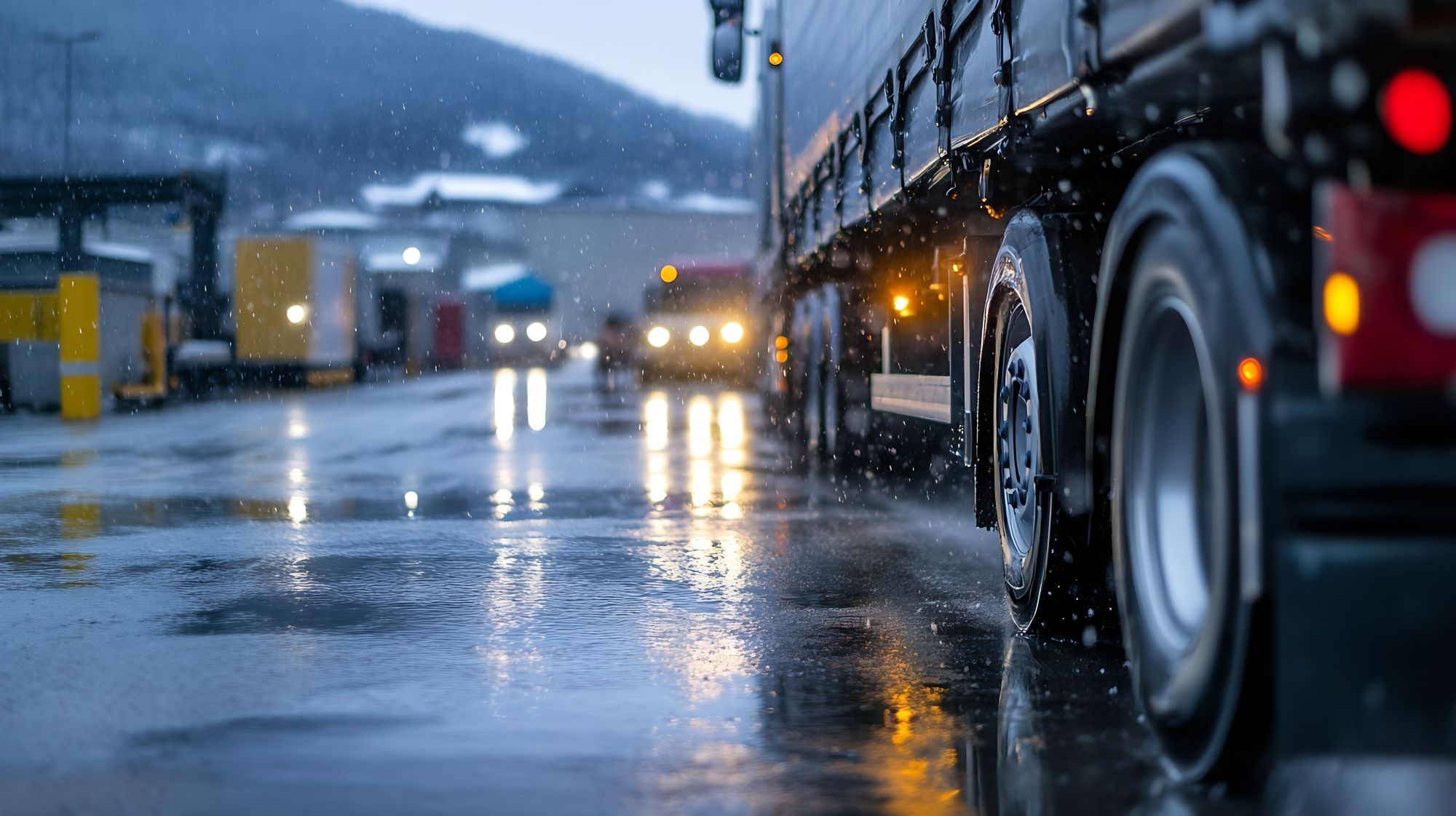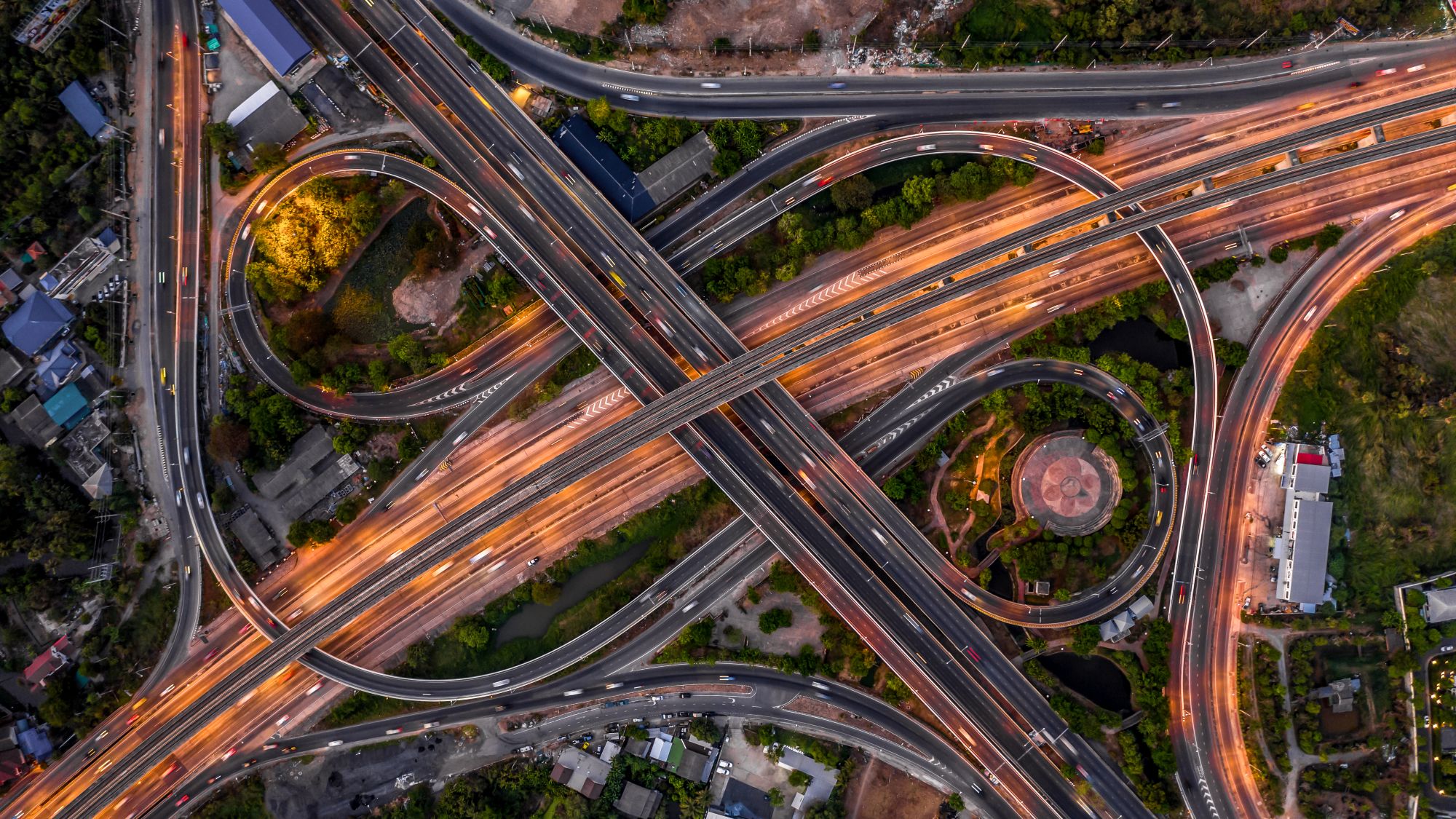
Guest
Hvordan britisk infrastrukturfinansiering kan påvirke mobilitetsindustrien
Oprettet: 02.07.2025
•
Opdateret: 03.07.2025
Efter mange år med ujævne investeringer og stigende trængsel har den britiske regering forpligtet sig til at bruge mere end 700 milliarder pund på infrastruktur i løbet af det næste årti - meget af det er øremærket til landets veje. Fra nye godskorridorer til banebrydende digitale trafiksystemer kan den 10-årige infrastrukturstrategis indvirkning på erhvervschauffører og den bredere mobilitetsindustri blive transformerende.
Vejene er ved at nå bristepunktet
Vejene er kun en del af Storbritanniens transportmix - men de transporterer langt størstedelen af varerne. [Ifølge regeringsdata (https://assets.publishing.service.gov.uk/media/67dd4f03c6194abe97358bf6/dft-investment-management-srn-25-26.pdf#:~:text=create%20jobs%20and%20housing%20and,at%20the%20end%20of%20March) transporteres 81 % af den indenlandske fragt og 75 % af importen og eksporten ad vejene, hvilket gør dem til rygraden i den britiske logistik og økonomi.
Og på trods af at det kun udgør lidt over to procent af Storbritanniens vejnet i længde, transporterer Strategic Road Network (SRN) 34 procent af alle vejtransporter - herunder mange af de mest tidsfølsomme godsruter med stor volumen. For de chauffører, der bruger dem, har deres tilstand og kapacitet en direkte indvirkning på sikkerhed, effektivitet og leveringsevne.
Data fra Road Condition Index (RCI) viser dog, at omkring 24.500 miles - mere end hver 10. mil - af vejnettet i England og Wales sandsynligvis vil kræve vedligeholdelse i løbet af de næste 12 måneder.
En række nylige nødlukninger af broer har yderligere afsløret, hvor sårbart netværket er blevet. I nogle områder har revnede støttestrukturer og årtier gammel beton skabt farlige forhold for alle trafikanter - især lastbiler, som ofte er de første, der bliver udsat for vægtbegrænsninger eller tvungen omdirigering.
Regeringen har reageret med en ny fond på 1 milliard pund til reparation og genopbygning af nedslidte broer, overkørsler og viadukter som en del af sin infrastrukturstrategi. Det er et velkomment skridt - og et, der afspejler et voksende pres fra branchen. For professionelle chauffører kan det betyde færre omveje, færre pludselige restriktioner og mindre tid, der går tabt på grund af infrastruktur, som ikke er egnet til moderne logistik.
Men sikkerhed handler ikke kun om at undgå katastrofale fejl. Det handler også om langsigtet robusthed - at sikre, at veje, broer og rastepladser vedligeholdes ordentligt, før de bliver til farer. Dette fornyede fokus på vedligeholdelse signalerer, at vejvedligeholdelsen endelig kan begynde at matche omfanget, størrelsen og hastigheden af de køretøjer, der er afhængige af den.
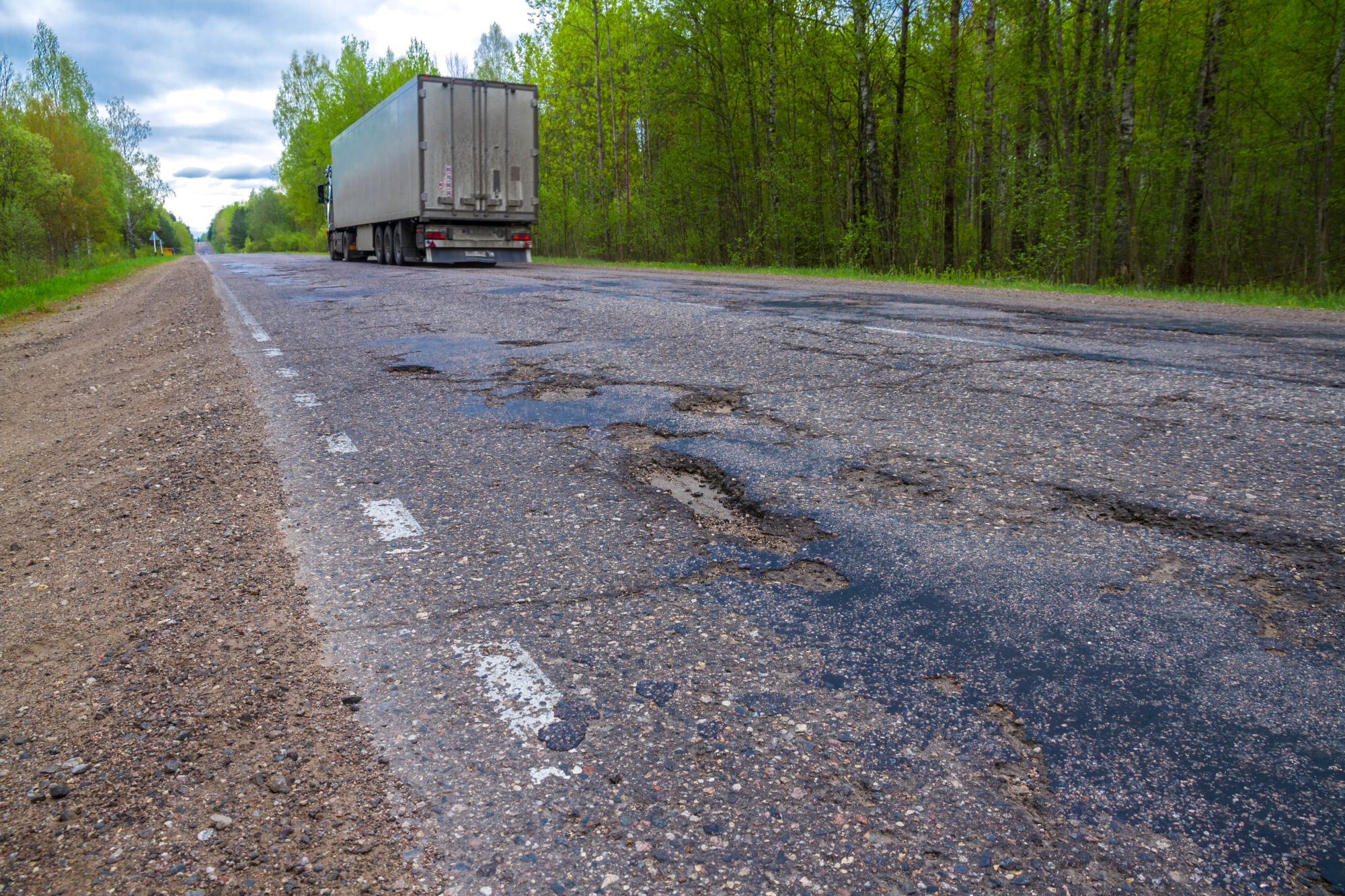
Problemet med huller i vejen
Mens højt profilerede projekter dominerer annonceringerne, er det ofte den daglige tilstand af vejbelægningen, der har den største indvirkning på chaufførerne. For dem, der arbejder med transport, er huller i vejen mere end en gene - de er en vedvarende sikkerhedsrisiko og en dyr byrde.
Gentagen eksponering for ujævne overflader øger slitagen på lastbiler, beskadiger dæk og affjedring og bidrager til træthed hos chaufføren. I nogle tilfælde har skader fra huller i vejen tvunget køretøjer væk fra vejen for at foretage nødreparationer, hvilket har forstyrret leverancer og påvirket aftaler om serviceniveau.
For bilister er risikoen personlig. Forsøg på at undgå huller i vejen - især på smalle eller trafikerede veje - kan føre til farlige manøvrer. Tilføj dårligt vejr, begrænset belysning eller stramme leveringsplaner, og indsatsen stiger.
Som en del af sin bredere infrastruktursatsning har regeringen afsat [1,6 milliarder pund] (https://www.gov.uk/government/news/pm-tells-councils-to-prove-action-on-pothole-plague-to-unlock-extra-cash-and-reveals-48bn-for-major-roads) som en del af Plan for Change til at opgradere lokal infrastruktur, herunder huller i vejene, revnede overflader og nedslidte kørebaner. Målet er at bringe vejene op på en mere sikker og pålidelig standard - især på godstunge ruter.
Det løser ikke problemet fra den ene dag til den anden, men det markerer et skift i prioriteterne - en anerkendelse af, at førerens velfærd starter med det grundlæggende, og at en sikker og behagelig rejse afhænger af velholdte veje.
For flåderne betyder det bl.a. færre uplanlagte reparationer, færre forsikringskrav og mindre nedetid for chaufførerne. For chaufførerne betyder det færre rystelser, mindre stress og en ting mindre at bekymre sig om på en lang vagt.
Et pålideligt netværk
Chaufførernes velfærd er i centrum for moderne transportsamtaler. Lange arbejdstider, forsinkede tidsplaner og utilstrækkelige faciliteter har sat sine spor. Men regeringens seneste planer giver håb om et mere sikkert og bedre forbundet netværk.
Overalt i Storbritannien har chaufførfaciliteterne haft svært ved at følge med efterspørgslen. Parkeringsmulighederne er ofte begrænsede, servicen er presset, og mange rastepladser mangler komfort og sikkerhed - især til langdistancekørsel. Derfor er regeringen også i gang med at [forbedre køremiljøet] (https://www.gov.uk/government/news/more-than-14-million-in-joint-government-and-industry-funding-to-boost-innovation-and-working-conditions-in-freight): mere sikker parkering, bedre velfærdsfaciliteter og planlægningsreformer for at fremskynde udviklingen af nye steder.
Samtidig accelererer investeringerne i opladnings- og optankningscentre for el- og brintlastbiler. Moto har f.eks. forpligtet sig til at installere over 300 elektriske opladere til lastbiler på 23 motorvejsstrækninger, mens Ashford Truckstop er ved at blive omdannet til et stort opladningsknudepunkt for gods på tværs af kanalen. Disse faciliteter handler ikke kun om at holde køretøjerne i gang - de handler om at give chaufførerne sikre, veludstyrede steder at hvile og genoplade sig selv.
Hvis dine chauffører leder efter et sikkert sted at stoppe, giver vores intruck-app dem mulighed for at identificere og booke rastepladser i hele Storbritannien og Europa. [Find ud af mere og download den her] (https://intruckapp.com/)
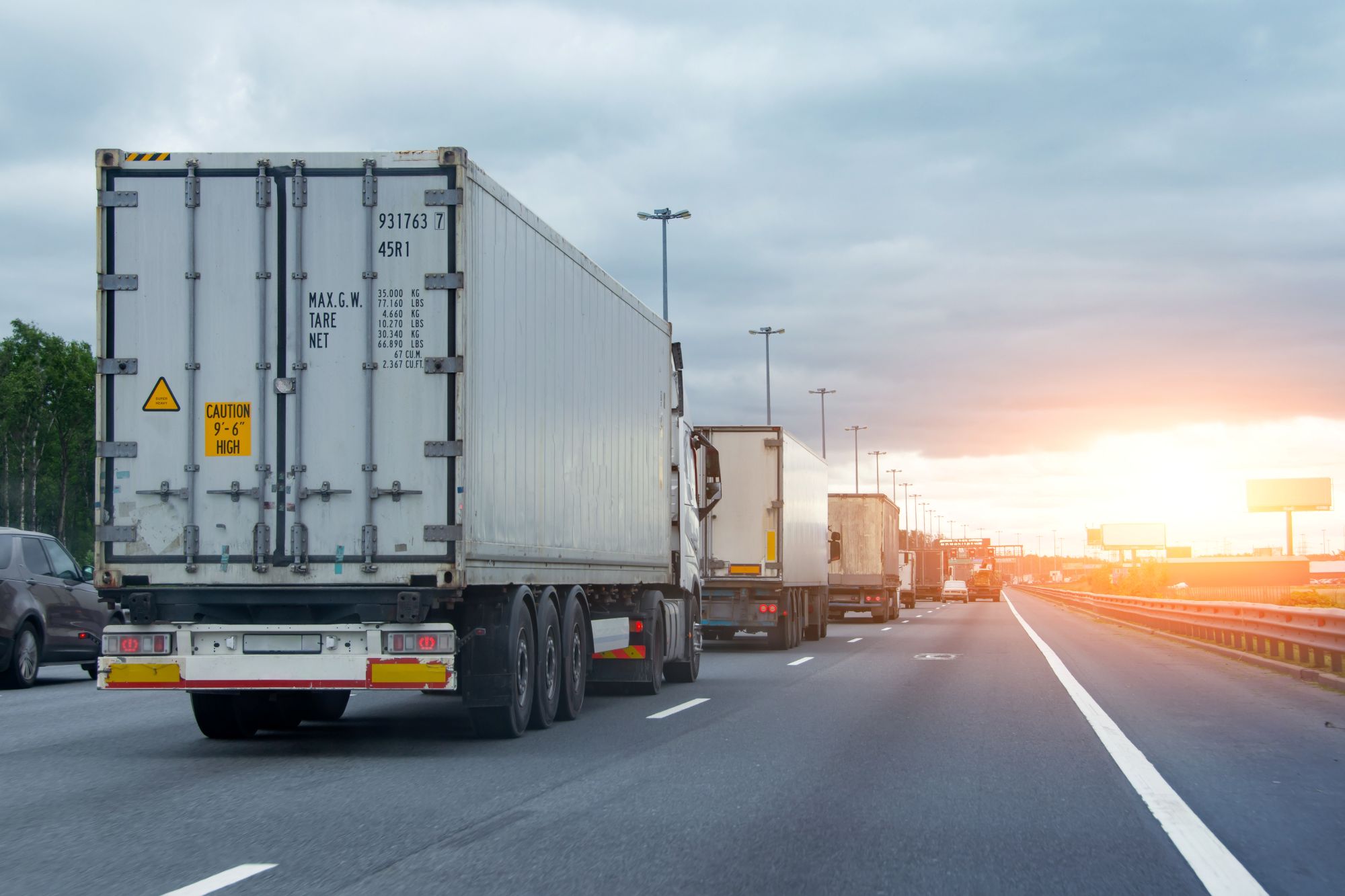
Omkostningerne ved trængsel
Trafikpropper, uforudsigelige ruter og pres for at nå leveringsvinduer bidrager til stress og træthed hos chaufførerne - og de gør vejen til et farligere sted at være.
Store infrastrukturopgraderinger som Lower Thames Crossing, A66 dualling og M60 Simister Island forbedringer er designet til at reducere trængsel og mindske risikoen for ulykker på nogle af Storbritanniens mest berygtede knudepunkter.
Derudover er der stadig et pres for at indføre digitale værktøjer, der understøtter sikrere og mere gnidningsløse rejser. Trafikalarmer i realtid, smarte detektionssystemer og bedre trafikstyring vil hjælpe flådechefer og chauffører med at reagere hurtigt på forstyrrelser og omdirigere, hvor det er nødvendigt.
[National Highways' Digital Roads programme] (https://nationalhighways.co.uk/our-work/digital-data-and-technology/digital-roads/) er allerede i gang med at lægge grunden med smart infrastruktur, der kan opdage farer tidligere, styre trafikstrømme mere intelligent og kommunikere klarere opdateringer i realtid.
Hvad betyder det for mobiliteten?
Et skridt fremad for mobilitet og chaufførernes velfærd. Den koordinerede nationale indsats for at tackle Storbritanniens efterslæb på infrastrukturen og modernisere vejene på en måde, der gavner de bilister, der er mest afhængige af dem.
Den virkelige test vil være i leveringen. At omsætte midler til håndgribelige forbedringer kræver, at man lytter til bilisterne, lærer af deres erfaringer og måler succesen på, hvordan vejene føles - ikke kun på, hvad de koster.
"Denne nye investeringsbølge handler ikke kun om at reducere rejsetiden," siger Stuart Willetts, UK Business Development Manager hos SNAP. "Det handler om at opbygge et transportnetværk, der understøtter chaufførernes trivsel og driftseffektivitet og overgangen til ren mobilitet. Vi kan ikke vente med at se resultaterne."
Vil du se, hvordan mobilitet udvikler sig, hvor du er?
Brug SNAP-kortet til at finde tjenester og løsninger i nærheden af dig - uanset hvilken vej du er på.
